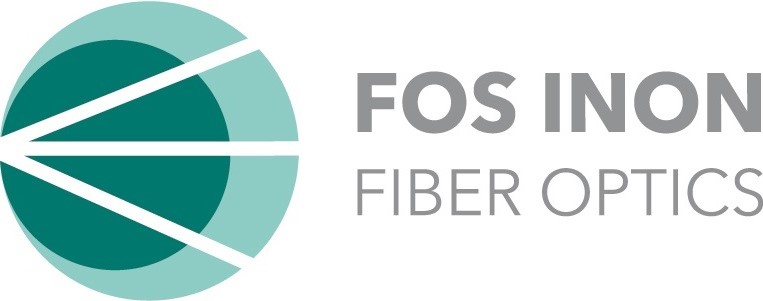Join us on a Journey Beyond Exploring the Cosmos with Multimode Fiber Assemblies
Are you curious about the cutting-edge technologies driving deep space exploration? Dive into our latest article, where we unravel the fascinating world of optical communication solutions for the harshest environments – the vast reaches of space.
Discover the significance of using multimode fiber assemblies designed to withstand extreme conditions and ensure reliable data transmission over unimaginable distances. From advanced polyimide coatings to non-outgassing materials and adhesive-free bonding techniques, we unveil the intricate strategies that make fiber bundles thrive in the cosmos.
Delve into the science behind the choice of multimode fibers, uncover the physical laws governing their performance, and grasp why FOS Inon Optics is a key player in this space. Embark on this cosmic journey with us and unveil the technology shaping the future of deep space exploration.
Unravel the mysteries of optical communication in the void of space and discover why FOS Inon Optics stands at the forefront of this technological revolution. Join us in exploring the unknown, one photon at a time!
Multimode Fiber Assemblies in Harsh Environments: Enabling Deep Space Exploration
Deep space exploration demands communication systems to withstand extreme conditions, ensuring reliable data transmission over vast distances. Multimode fiber assemblies have emerged as a promising solution, offering numerous advantages such as higher data capacity, ease of coupling, and robustness. This article explores the use of multimode fiber assemblies in deep space applications, delving into the critical factors that make fiber bundles work, from employing polyimide coatings to non-outgassing materials. Additionally, we discuss the significance of multimode fibers in deep space missions and highlight the challenges faced by manufacturers in meeting the exacting requirements of this cutting-edge technology.
Multimode Fiber Assemblies for Deep Space Exploration:
Why Choose Multimode Fibers?
In deep space applications, where spacecraft endure mechanical stress, vibrations, and temperature fluctuations, multimode fibers offer distinct advantages over their single-mode counterparts. Multimode fibers have larger core diameters, making them less susceptible to bending and micro-bending losses, which can be critical in harsh environments. Additionally, multimode fibers facilitate efficient coupling with optoelectronic components, simplifying alignment and reducing losses. These characteristics contribute to the robustness and cost-effectiveness of multimode fiber assemblies.
Polyimide Coatings for Enhanced Durability:
To withstand the rigors of deep space, fiber bundles require protective coatings that can endure mechanical and thermal stress. Polyimide coatings have gained popularity for their outstanding mechanical strength and resistance to temperature extremes. Polyimide, a high-performance polymer, maintains its structural integrity even in the presence of radiation, ensuring the long-term reliability of fiber assemblies. The application of polyimide coatings preserves signal integrity and minimizes the risk of failure during extended space missions.
Non-Outgassing Materials for Vacuum Environments:
Deep space missions often encounter vacuum conditions, where outgassing from materials can pose a significant challenge. Outgassing refers to releasing volatile compounds from materials, leading to contamination and adversely affecting sensitive equipment. Manufacturers ensure that the spacecraft environment remains clean and free from harmful substances by utilizing non-outgassing materials in fiber bundles. This is vital for preserving the functionality and longevity of optical components in space.
Adhesive-Free Bonding for Long-Term Reliability:
Conventional adhesives can deteriorate under harsh conditions, causing signal losses or misalignment in fiber bundles. Therefore, manufacturers opt for adhesive-free bonding techniques like mechanical splicing or fusion splicing. These methods provide robust and reliable connections, enhancing the long-term performance of multimode fiber assemblies. The absence of adhesives mitigates the risk of degradation, making it ideal for the demanding conditions of deep space exploration.
The Relevance of Multimode Fibers in Deep Space:
Data Transmission Capacity:
Deep space missions demand high data transmission rates to relay vast amounts of information across great distances. Multimode fibers excel in this regard, capable of handling higher bandwidths than single-mode fibers. This capacity allows for the efficient transfer of mission-critical data, scientific findings, and telemetry, making multimode fibers an invaluable asset for deep space applications.
Cost-Effectiveness:
Cost considerations often play a crucial role in space missions. Multimode fibers offer a cost-effective solution compared to single-mode fibers, making them an attractive choice for budget-constrained projects. Their ease of handling and compatibility with commercial off-the-shelf components further contribute to cost savings in designing and implementing fiber optic systems.
Challenges Faced by Manufacturers:
The production of high-quality multimode fiber assemblies for deep space applications is not without its challenges. Manufacturers must possess sophisticated knowledge of material properties, environmental factors, and specific mission requirements. The stringent demands of deep space exploration necessitate meticulous attention to detail, stringent testing protocols, and continuous research to improve the reliability and performance of fiber bundles in extreme conditions.
Multimode fiber assemblies have emerged as indispensable tools for deep space exploration, offering durability, efficient data transmission, and cost-effectiveness. Manufacturers can enhance the reliability of fiber bundles in harsh environments by employing polyimide coatings, non-outgassing materials, and adhesive-free bonding. However, the intricate demands of space applications necessitate a comprehensive understanding of physical laws, material properties, and mission-specific requirements. As deep space missions continue to expand our understanding of the cosmos, the evolution of multimode fiber technology will undoubtedly play a crucial role in the success of future endeavors.
FOS Inon Optics has emerged as a leading player in the field of optical light transmission solutions for deep space missions. Their specialization in harsh-environment solutions, extensive experience in multimode fiber technology, advanced polyimide coatings, non-outgassing materials, adhesive-free bonding techniques, commitment to research, and ability to offer customized solutions make them a top choice for companies and organizations embarking on deep space exploration. With FOS Inon Optics‘ expertise, the reliability and performance of optical communication systems are further enhanced, contributing to the success of future space missions and our understanding of the cosmos.

